Anointing 27 November 1975 Successor Letizia of Spain Role King consort of Spain | Name Queen Sofía House Glucksburg | |
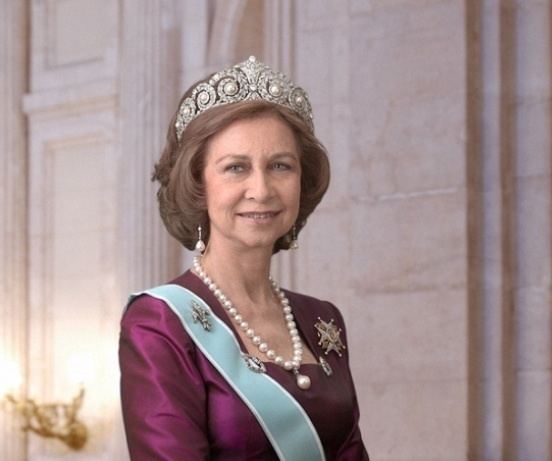 | ||
Tenure 22 November 1975 – 19 June 2014 Father Paul, King of the Hellenes Spouse Juan Carlos I of Spain (m. 1962) Children Felipe VI of Spain, Infanta Elena, Duchess of Lugo, Cristina Federica, Infanta of Spain Parents Frederica of Hanover, Paul of Greece Similar People Juan Carlos I of Spain, Felipe VI of Spain, Letizia of Spain, Leonor - Princess of Asturias, Infanta Elena - Duchess | ||
King Juan Carlos And Queen Sofia Of Spain
Queen Sofía (/sɒˈfiːə/, [soˈfi.a]; Greek: Σοφία [soˈfi.a]; formerly Princess Sophia of Greece and Denmark, born 2 November 1938) is the wife of King Juan Carlos I. Sofia was the first child of King Paul I of Greece and his wife Queen Federica. As her family was forced into exile during the Second World War, she spent part of her childhood in South Africa, returning to Greece in 1946. She completed her secondary education in a boarding school in Germany before returning to Greece where she specialised in childcare, music and archaeology. She married the future King Juan Carlos, son of the Spanish pretender Don Juan, on 14 May 1962 with whom she would have three children: Elena, Cristina, and Felipe.
Contents
- King Juan Carlos And Queen Sofia Of Spain
- tribute to queen sof a of spain
- Early life
- Marriage and family
- Activities
- Personal life
- Abolition of the Greek monarchy
- Fashion
- Opinions
- Notable published works
- Social conservatism
- Titles honours and arms
- References

She became Queen consort of Spain upon her husband's accession in 1975. On 19 June 2014, Juan Carlos abdicated in favour of their son, Felipe VI.
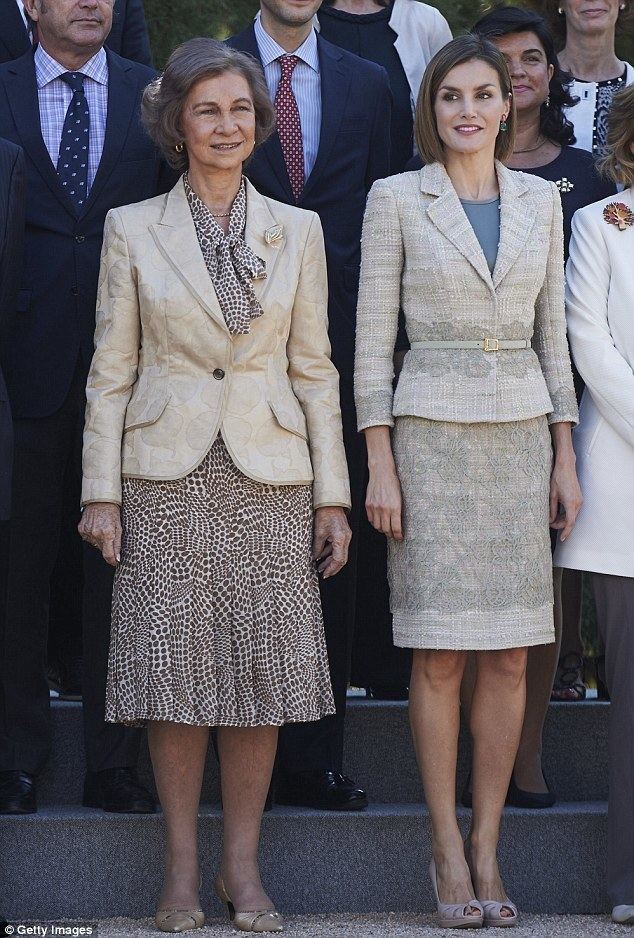
tribute to queen sof a of spain
Early life
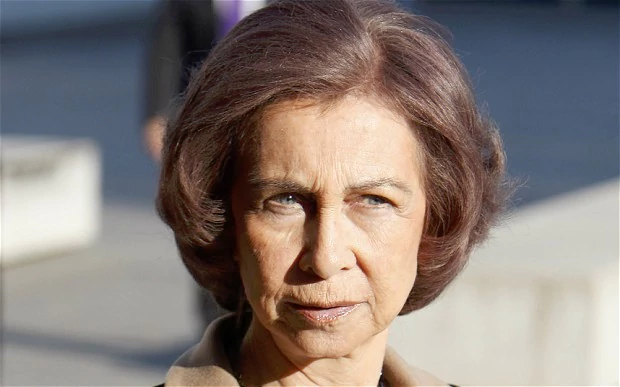
Princess Sophia of Greece and Denmark was born on 2 November 1938, in Psychiko, Athens, Greece, the eldest child of King Paul and his wife, Queen Frederica. Sofia is a member of the Schleswig-Holstein-Sonderburg-Glücksburg dynasty. Her brother is the deposed King Constantine II and her sister is Princess Irene.
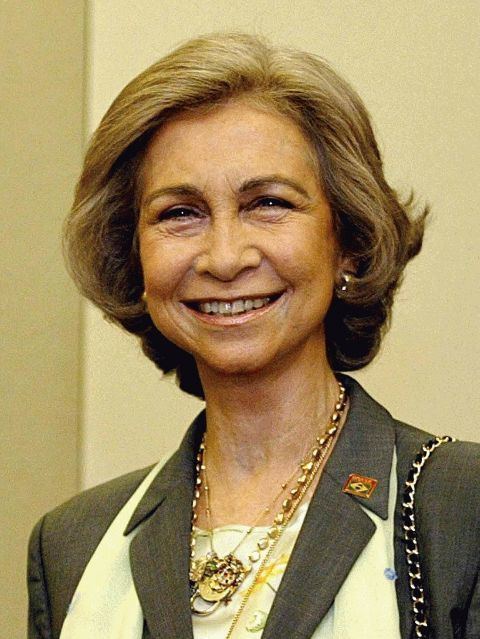
Princess Sophia spent some of her childhood in Egypt where she took her early education in El Nasr Girls' College (EGC) in Alexandria. She lived in South Africa during her family's exile from Greece during World War II. They returned to Greece in 1946. She finished her education at the prestigious Schloss Salem boarding school in Southern Germany, and then studied childcare, music and archeology in Athens. She also studied at Fitzwilliam College, Cambridge, now though not then a constituent college of the University of Cambridge, She represented Greece, alongside her brother Constantine, as a reserve member of the Gold Medal-winning sailing team in the 1960 Summer Olympics.
Marriage and family

Sophia met her paternal third cousin the then Infante Juan Carlos of Spain on a cruise in the Greek Islands in 1954; they met again at the wedding of the Duke of Kent, her paternal second cousin, at York Minster in June 1961.
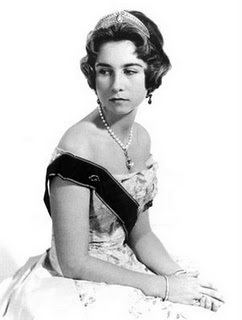
The couple married on 14 May 1962, at the Catholic Cathedral of Saint Dionysius in Athens. The bride's gown was made by Jean Dessès and she was attended by her sister Princess Irene of Greece and Denmark, the groom's sister Infanta Pilar of Spain, and Sofia's future sister-in-law Princess Anne-Marie of Denmark (later Queen of Greece), along with Princess Irene of the Netherlands, Princess Alexandra of Kent, Princess Benedikte of Denmark, Princess Anne of Orléans and Princess Tatiana Radziwill.
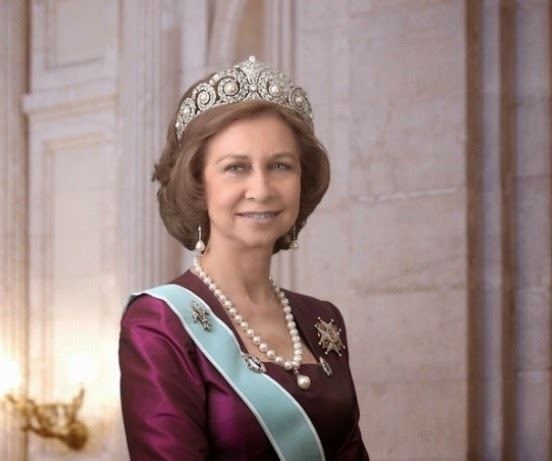
Sofia converted from Greek Orthodoxy to Roman Catholicism to become more palatable to Catholic Spain, and thus relinquished her rights to the Greek throne. Along with this, the usual Latinisation of her Greek name (Σοφία) was changed from Sophia to the Spanish variant, Sofía.
In 1969, Infante Juan Carlos, who was never Prince of Asturias (the traditional title of the Spanish heir apparent), was given the official title of "Prince of Spain" by the Spanish state; Sofía herself had suggested the title. Juan Carlos acceded to the throne in 1975, upon the death of Francisco Franco.
The couple have three children: Elena (born 20 December 1963); Cristina (born 13 June 1965); and Felipe (born 30 January 1968). Their four grandsons and four granddaughters are Felipe and Victoria de Marichalar y de Borbón, Juan, Pablo, Miguel and Irene Urdangarín y de Borbón, and Leonor, Princess of Asturias and Sofía, all of whom are in the line of succession to the Spanish throne.
Activities
Besides accompanying her husband on official visits and occasions, Queen Sofía also has solo engagements. She is executive president of the Queen Sofía Foundation, which in 1993, sent funds for relief in Bosnia and Herzegovina, and is honorary president of the Royal Board on Education and Care of Handicapped Persons of Spain, as well as the Spanish Foundation for Aid for Drug Addicts.
She takes special interest in programs against drug addiction, travelling to conferences in both Spain and abroad. The Museo Nacional Centro de Arte Reina Sofía is named after her, as is Reina Sofía Airport in Tenerife. Queen Sofía is often seen representing the Spanish Royal Family at weddings of other European royalty, most recently at the wedding of Victoria, Crown Princess of Sweden, and Daniel Westling in 2010, and the wedding of Prince William and Catherine Middleton in 2011; her husband had earlier expressed his wish that he not attend such royal functions.
The Queen is an Honorary Member of the San Fernando Royal Academy of Fine Arts and of the Spanish Royal Academy of History. She has received honorary doctorates from the Universities of Rosario (Bogotá), Valladolid, Cambridge, Oxford, Georgetown, Evora, St. Mary's University (Texas), and New York.
A keen supporter of sport, the Queen also attended the final match of the 2010 Wimbledon Championships – Men's Singles where she watched Spanish tennis champion Rafael Nadal win for a second time, as well as the 2010 FIFA World Cup where the Spanish team was crowned as world champion.
Queen Sofía has been honorary president of the Spanish Unicef Committee since 1971. She has been working closely with Dr. Muhammed Yunus on his Grameen Bank (or "Village Bank"), which offers microcredits to women across the world. Queen Sofía has travelled to Bangladesh, Chile, Colombia, El Salvador and Mexico to support the activities of the organization led by Yunus. Queen Sofía has also been a strong supporter of Somaly Mam's efforts and of the NGO she founded—Agir pour les Femmes en Situation Précaire (AFESIP)—in combatting child prostitution and slavery in Cambodia. In 1998, Mam was awarded the prestigious Prince of Asturias Award for International Cooperation in her presence.
In July 2012, the Queen visited the Philippines for a fourth time. She inspected several development projects around the former Spanish colony that her country's government is funding via the Agencia Española de Cooperacion Internacional para el Desarollo (AECID). She visited the National Library, National Museum and the University of Santo Tomas. She also met with Spanish nationals residing in the Philippines, and attended a reception at the Spanish Embassy. She also attended a state dinner in her honour at Malacañan Palace hosted by President Benigno Aquino III.
Personal life
In addition to Spanish and her native Greek, Queen Sofía also speaks Italian, French, German, Portuguese and English.
Abolition of the Greek monarchy
The then-Princess Sofía was in Greece on a private visit to her brother, King Constantine II, when the 1967 Greek military coup took place. Since then, he has been stripped of his title, citizenship and property in Greece. Except for a brief stay for the funeral of her mother in 1981, Queen Sofía did not visit republican Greece until 1998. She and her husband paid an official visit after 17 years as guests of the then–President Constantinos Stephanopoulos.
Fashion
Sofía is considered one of the most fashionable royals in Europe and there is always interest in her clothing at royal events. After becoming queen, she gained the privilege of wearing white before the pope, as opposed to the black donned by other visitors who do not have the title "Catholic Monarch".
Opinions
She has expressed opinions on policy including her criticism of the military intervention in Afghanistan, where Spanish troops were taking part at the time, her defence of religious education in schools, and her conviction that gender violence publicity will encourage new cases to occur. Her opinions were subjected to lively criticism by LGBT associations and Spanish intellectuals. Also responding were Spanish republican political parties like IU and ERC. The governing PSOE decided to keep silent, while the conservative opposition PP also did so, after initial criticism of the Queen from one of its representatives.
A biography published in May 2012 claims that the Queen is a vegetarian who dislikes bullfighting.
Notable published works
Social conservatism
On the occasion of her 70th birthday, she made a number of conservative ideological issues on issues then being debated in Spanish society. These statements were published by the Opus Dei journalist Pilar Urbano, and included Queen Sofía's rejection of same-sex marriage, rejection of gay pride celebration, anti-abortion position and defence of religious education in schools. Her opinions produced great unrest among progressive sectors of Spanish society, and prompted criticism of her for getting involved in partisan opinions against her constitutional mandate.
Titles, honours and arms
Sofía was appointed to the Grand Cross of The Royal and Distinguished Order of Charles III on 10 May 1962 and to The Royal Order of Queen Maria Luisa on 14 May 1962. The Queen of Spain was appointed to the Collar of the The Royal and Distinguished Order of Charles III as dame on 31 October 1983. Since then, Queen Sofía has received different appointments and decorations by more than 40 foreign states.
